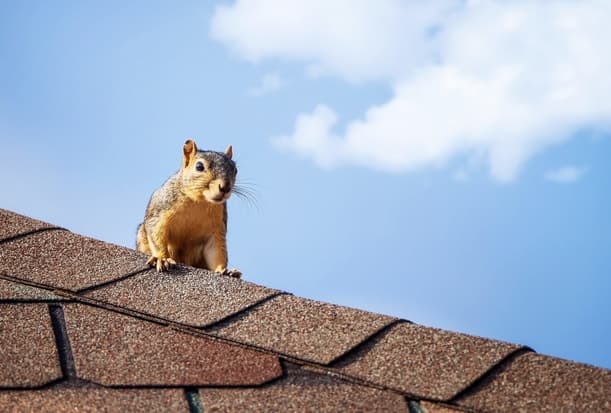With their warm insulation and quiet atmosphere, attics are often unintentionally good places for squirrels to hide or build nests. Even though squirrels might look peaceful at first, having them in your attic can cause a lot of trouble. Finding out how these animals get into your attic is very important if you want to avoid a full-on “Squirrelgeddon.” This piece will talk about the most common ways squirrels get into attics and how to stop them.
Getting on or off the roof
Squirrels can jump and climb very well. They can easily get to your roof by climbing nearby buildings like fences or tree branches that hang over. When they get to the roof, they look for places where the materials are weak or for holes near the vents and eaves. It is possible for squirrels to get into your attic through holes in wood, plastic, and even roofing shingles.
Take care of tree branches that make it easy to get to your roof by cutting them back. On a regular basis, check your roof for any signs of damage and fix any holes, cracks, or damaged materials right away. Over weak spots like roof vents, put metal flashing or wire mesh in place.
Damage to the fascia and soffit
That’s right, squirrels love to chew, and the fascia boards and soffits on your home are perfect for them. In these places, they often chew through things to make holes that lead straight into your attic. Squirrels can do a lot of damage inside by chewing on wire and insulation and leaving a mess of droppings and places to nest.
Solution: Look for damage or chewing marks on the fascia and soffit of your house. Any damaged parts should be replaced right away, and to stop chewing in the future, you might want to reinforce them with metal flashing or wire mesh.
Spaces between the roof and eaves
It’s easy for squirrels to find holes or weak spots in the structure of your house. Animals that like to stay put can easily get in through gaps around eaves, roof edges, and dormers. They can make these holes bigger over time, which will make it easier for them to get into your attic.
Fix: Use the right stuff, like glue, foam insulation, or wire mesh, to fill in any holes or gaps around the eaves, roof edges, and dormers. Do regular checks to find new gaps and fix them right away.
Air flow in the attic
Good attic airflow is important for keeping your home healthy, but it can also bring in squirrels by accident. There are often holes in roof vents and other ceiling ventilation systems that squirrels can use. Scents that come out of these vents can attract mice that are looking for food and a place to stay warm.
Solution: To keep squirrels out, cover roof vents and other air holes with strong wire mesh. Make sure that the vents that are already there are in good shape and not broken or falling apart.
Fireplaces
Squirrels can get into your home through chimneys, even though they are a cute building feature. A lot of the time, they climb down chimneys to find cover. If your chimney doesn’t have a cap or has a damaged cap, squirrels can get into your home.
Solution: To keep rats out while still letting air flow, put on a chimney cap with wire mesh. Check your chimney cap often for damage, and if you find any, repair it.
At the end of the day, knowing how squirrels get into attics is important for keeping them out. You can keep squirrels out of your attic and protect your home from the damage they might do by blocking off possible entry spots and fixing any damage right away. Call a professional pest control service right away if you think squirrels are in your attic or if you want expert advice on how to keep them out. They will be happy to help you deal with Squirrelgeddon.
Unmatched, professional, and guaranteed squirrel removal Port Hope. Performed by talented and experienced wildlife control experts who have all the tools and equipment available to get rid of the squirrels once and for all.

